
Discover how much under-cabinet lighting costs. Discover installation prices, key cost factors, and expert tips to save on your kitchen or workspace lighting project.
Swing on by with a lighting style that fits your space perfectly


Chandeliers aren’t just for fancy hotel lobbies and grand ballrooms. With so many different types of chandeliers available, from classic and ornate to modern and minimalist, there’s no shortage of options to illuminate the spaces in your home. Find the chandelier of your dreams that best suits your personal taste by browsing this descriptive list of chandelier styles.
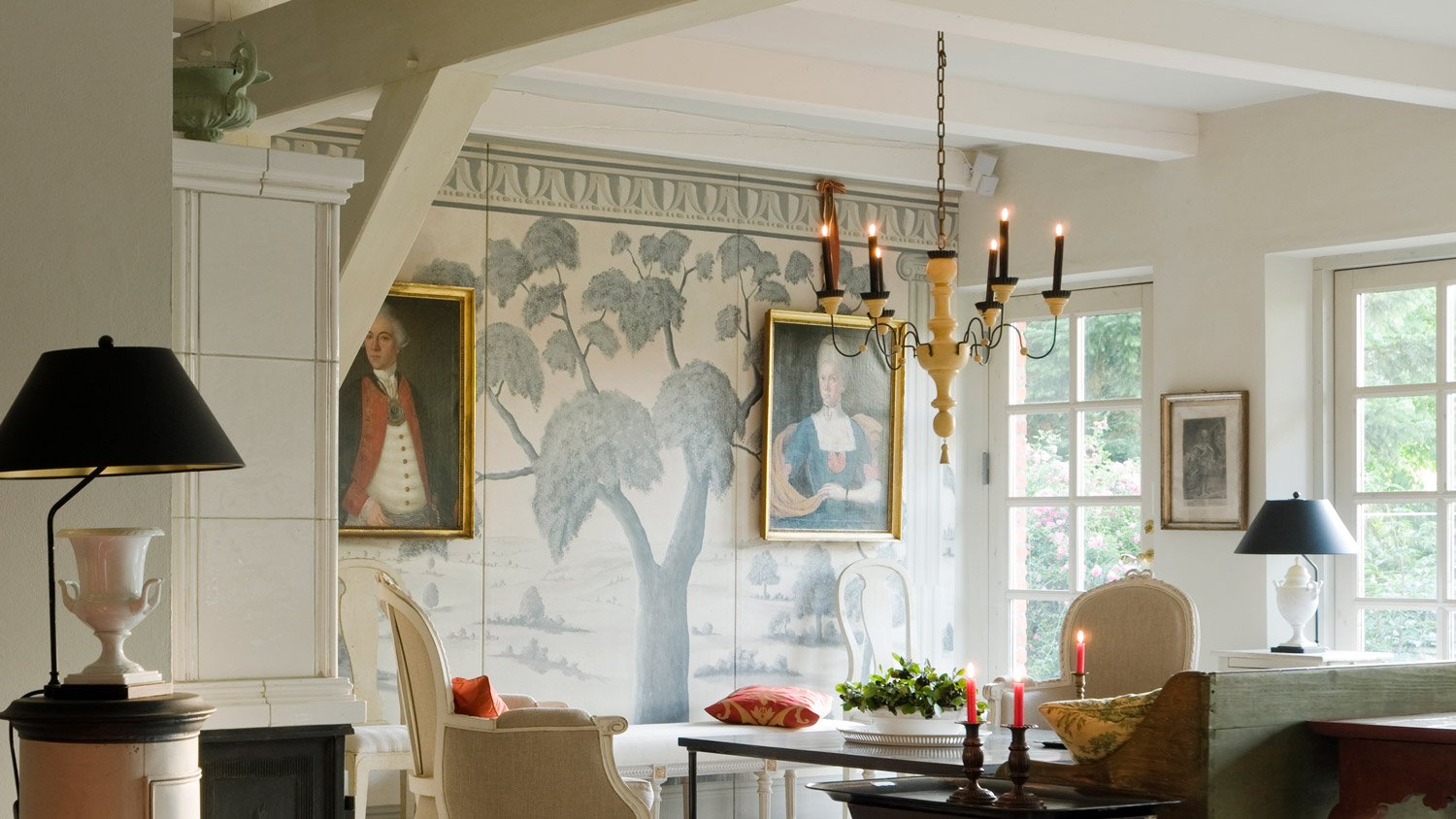
The contemporary chandelier likely traces its origin back to when chandeliers had actual lit candles in them. Formal candle chandeliers aim to capture this classic style with at least five candelabra arms extending from the center. A single flame-shaped bulb is perched on each extension for an understated elegance. Because the bulbs are typically exposed, it’s crucial that they all match perfectly. Wiring a chandelier with multiple lights usually isn’t too complex, as they gather to a single mounting point.
| Pros | Cons |
|---|---|
| Classic look | More formal |
| Takes up less space | Exposed bulbs |
| More rustic style | Special bulbs |
Best For: Traditional spaces with understated elegance

For a real showstopper that dials the glamor and elegance up a notch, crystal chandeliers are an excellent choice. The light reflects and refracts off the individual crystal pieces, offering a shimmering effect like diamond jewelry. Raindrop crystal chandeliers are a popular style. Be careful when you hang a chandelier made of crystal, as the individual pieces can be very fragile when they bump up against one another.
| Pros | Cons |
|---|---|
| Eye-catching design | More expensive |
| Shimmering light | Fragile and delicate |
| Romantic appeal | Harder to clean |
Best For: Formal spaces with more elevated elegance
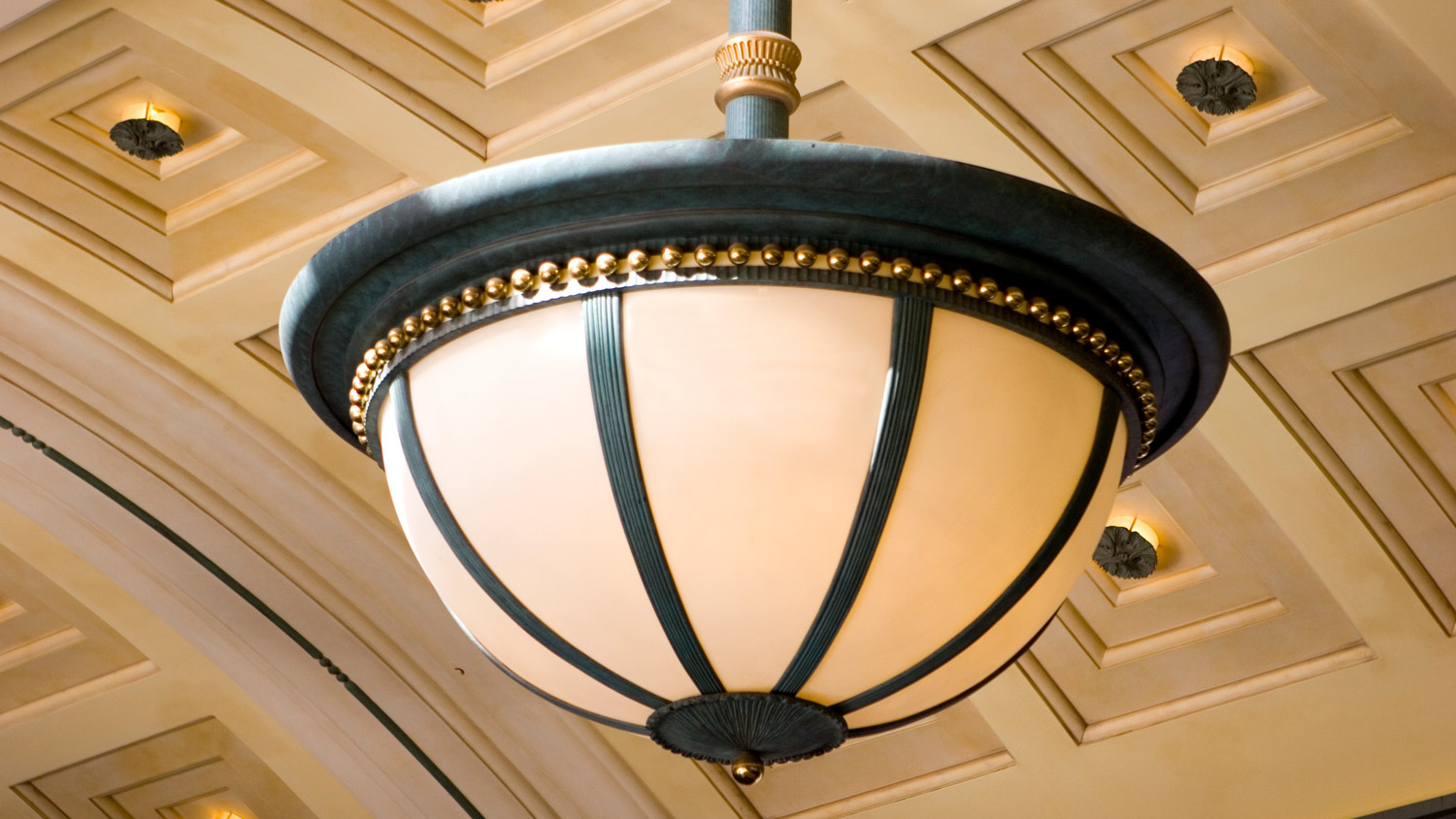
For a simpler style, bowl chandeliers are great for kitchens and bedrooms where you may not need as much light. They are literally shaped like a bowl with most of the light being directed upward at the ceiling. Three or more light bulbs fan out from the center, and the bowl acts as a light shade for a softer glow. Bowl chandeliers work best on lighter-colored ceilings that can reflect the light back into the room.
| Pros | Cons |
|---|---|
| Understated look | Less light output |
| Emits an even glow | Simpler design |
| Hidden light bulbs | Not for high ceiling |
Best For: Bedrooms and kitchens needing less light
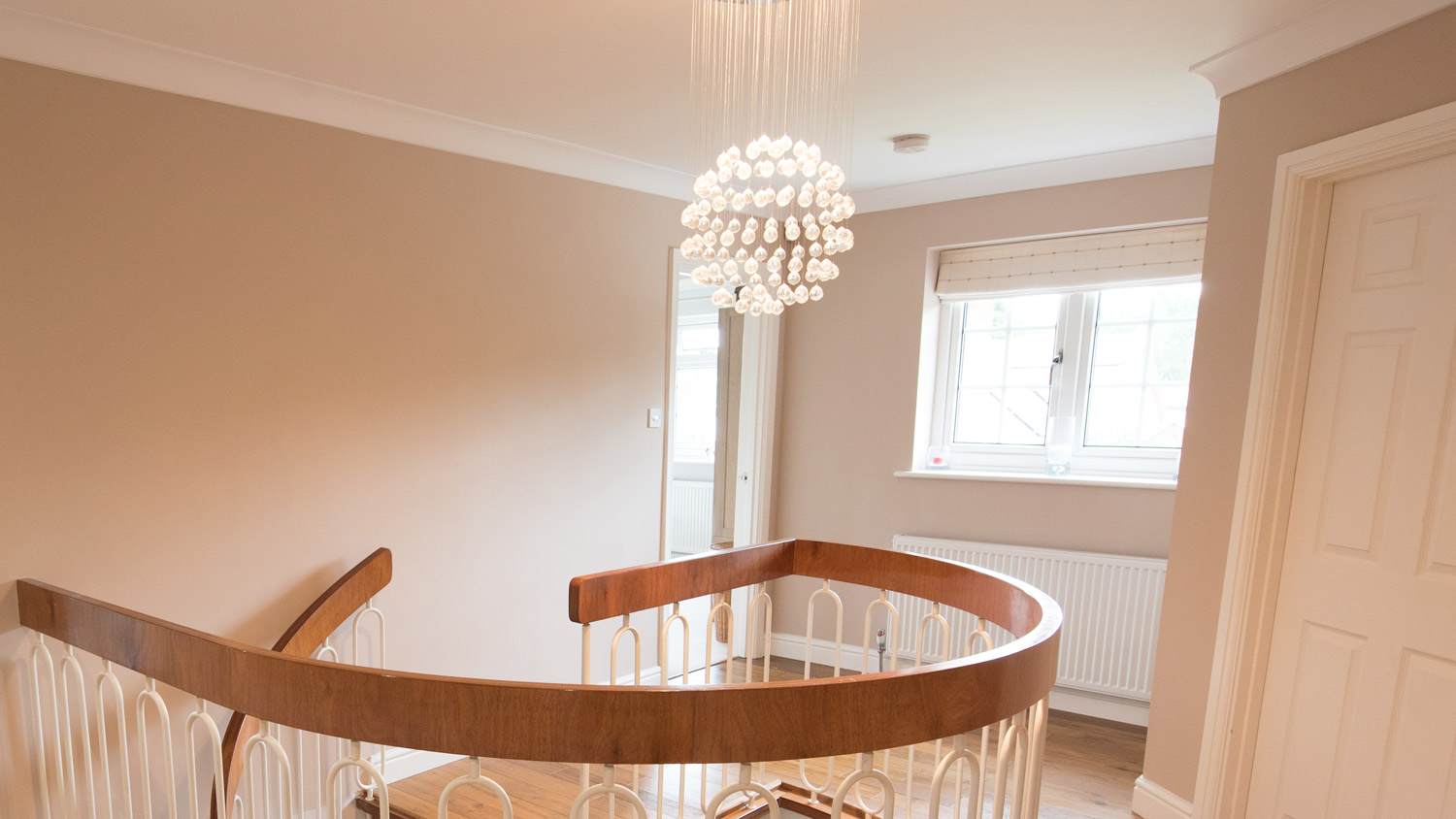
The types of chandeliers made of glass come in a remarkably wide range of designs. You can find glass chandeliers with more classic styles, similar to crystal chandeliers. Or, there are more modern designs that may take on more geometric shapes or a minimalist aesthetic. Like crystal, glass chandeliers can offer a unique effect based on how the light reflects and refracts off the glass pieces.
| Pros | Cons |
|---|---|
| Range of styles | Fragile glass |
| Unique light effects | Frequent dusting |
| Intricate designs | Streaks on glass |
Best For: Statement pieces with elevated designs

An option favored by hunters and other outdoorsy folks, antler chandeliers usually take on the form of deer or elk antlers. They may be made using naturally shed antlers, antlers from hunted game animals, or artificial materials made to mimic the appearance of real antlers. With more of a rugged, outdoors-oriented look, antler chandeliers may work well in living rooms, dens, cabins, and other spaces with exposed wood beams.
| Pros | Cons |
|---|---|
| Unique designs | Less common |
| Outdoorsy feel | Sharp points |
| Organic shapes | Uneven shadows |
Best For: Rustic spaces like cabins, dens, and rec rooms
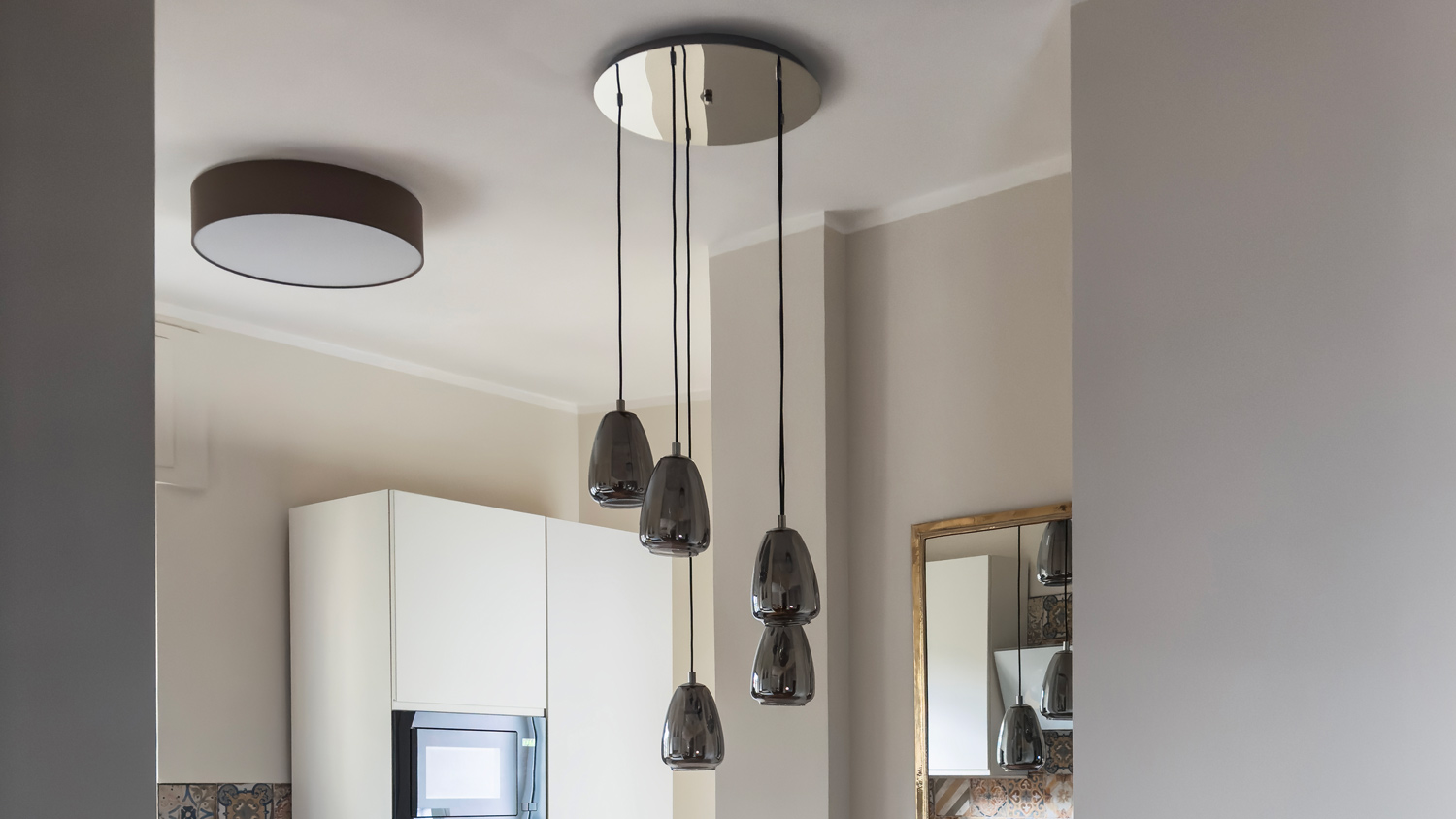
Most types of chandeliers are roughly circular in shape and horizontal in orientation. As their name indicates, vertical chandeliers have more of an up-and-down orientation to them. Spiral and raindrop chandeliers can be great options where you have a lot of vertical space, like hanging a tall chandelier in the center of a spiral staircase. This can add to the cost of installing a chandelier, as it takes more work to hang for a higher height.
| Pros | Cons |
|---|---|
| Fills vertical space | Needs high ceilings |
| A real “wow” factor | Harder to install |
| Unique option | Harder to clean |
Best For: Spiral stairways and spaces with elevated ceilings like foyers
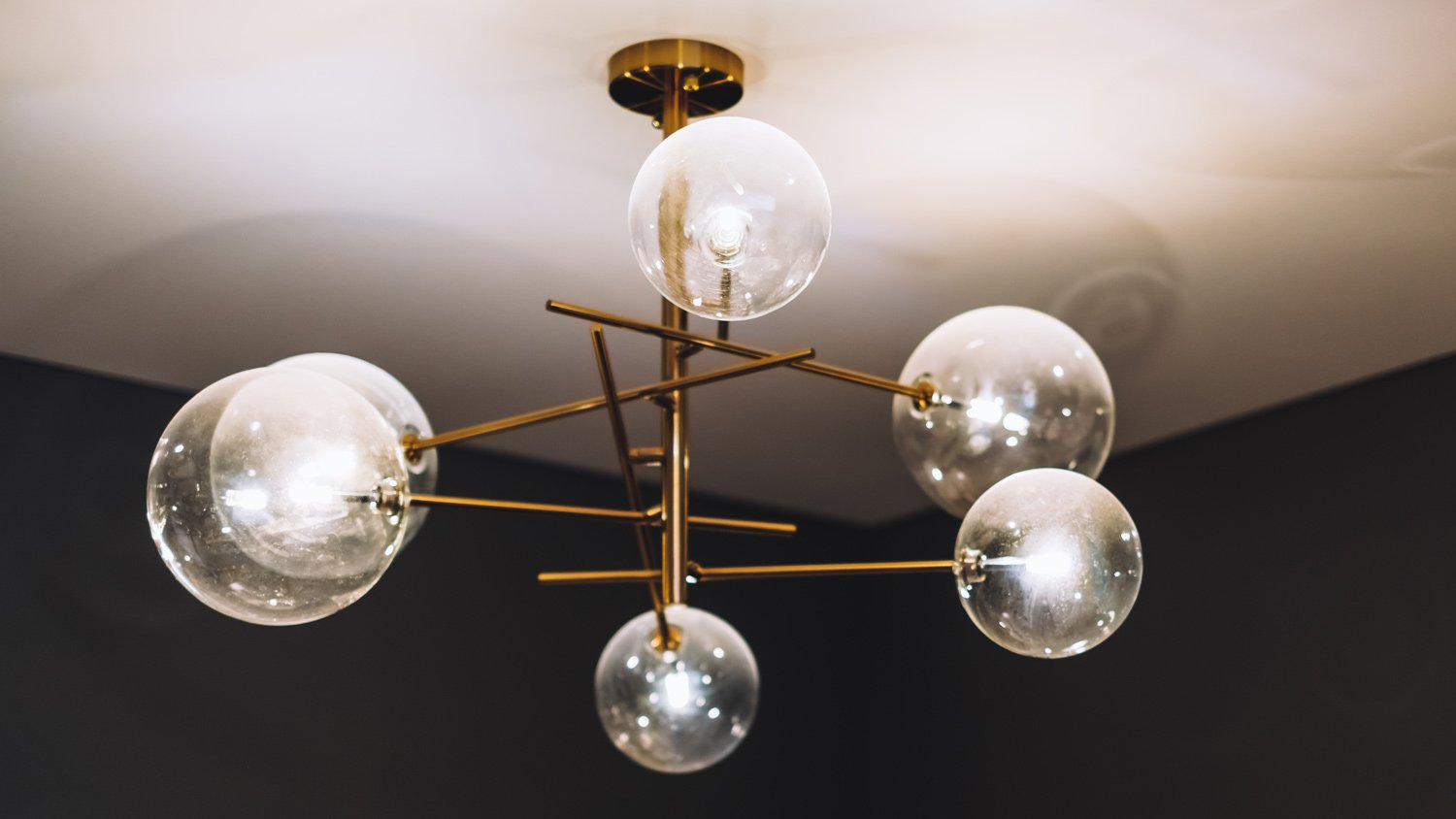
A decidedly more modern approach to lighting, Sputnik chandeliers point their lights in different directions. One of the types of chandeliers in this group has a central spherical core from which several light-tipped arms protrude, almost like a chemistry set model or sunburst. Other variations of Sputnik chandeliers may have several horizontal arms crossing one another without an obvious central core.
| Pros | Cons |
|---|---|
| Explosion of light | Ultra modern |
| Chic | Harsher direct light |
| Statement piece | Eye-catching |
Best For: Chic spaces seeking a more modern lighting style
For a departure from more heritage-centered designs with classic appeal, modern chandeliers tend to lean more into sharp geometric shapes. The soft reflections of glass and crystal are replaced by crisp edges, often in a more abstract configuration and design. Modern pendant lighting and chandeliers tend to be more minimalistic in their approach. Expect squares and rectangles, as well as circles and more organic shapes.
| Pros | Cons |
|---|---|
| Minimalist design | Less ornate |
| Range of options | Not for everyone |
| Simple approach | Cold and detached |
Best For: Entrance areas of modern, minimalist homes
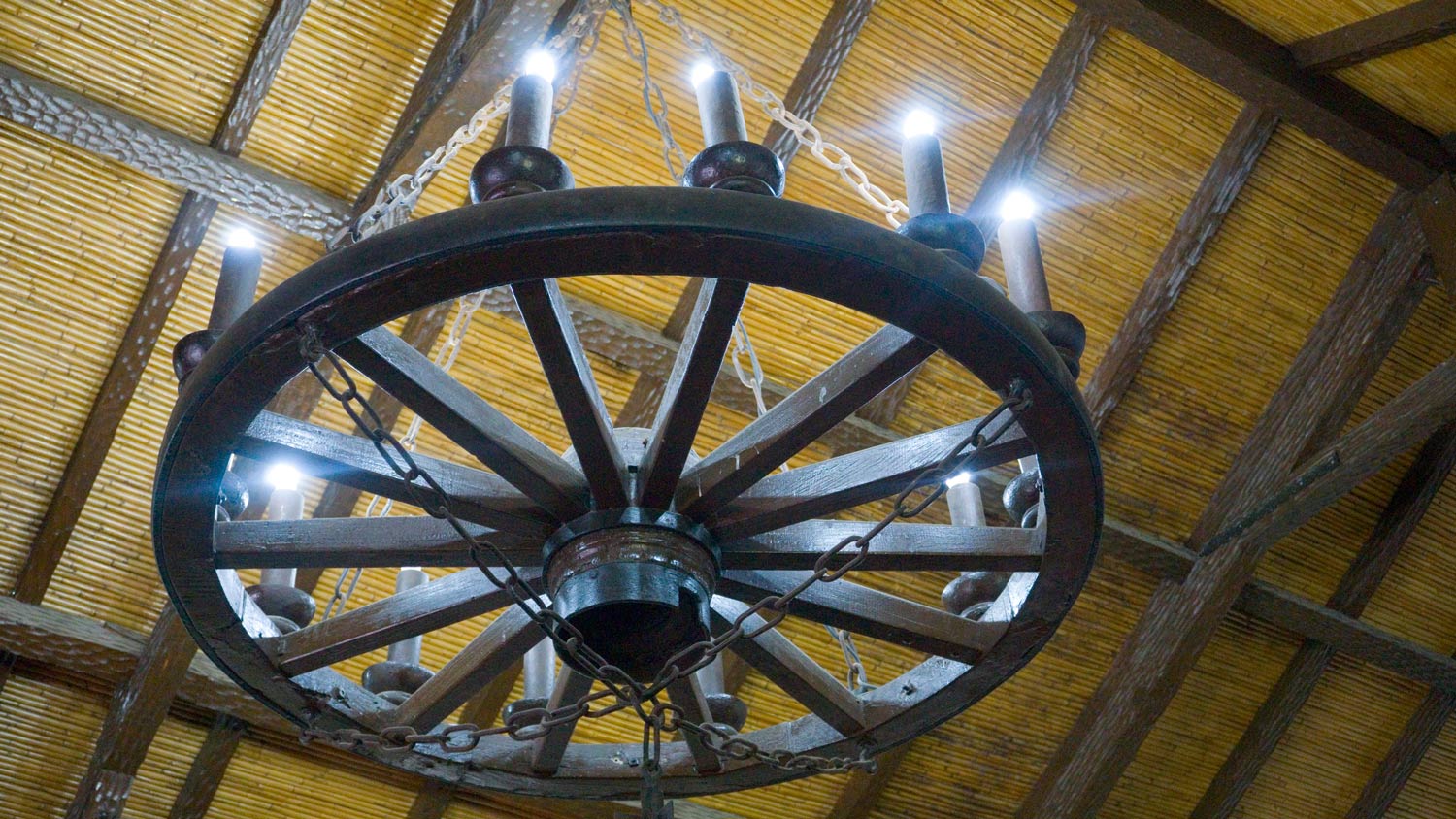
Wagon wheel chandeliers have simple designs that are purposely understated, offering more of a rustic farmhouse charm. The wagon wheel itself is usually one or more metal rings, suspended from the ceiling from three or more chains or arms connected to a single point. This can make it easier to remove the chandelier. The typically exposed light bulbs may be above or below the wheel, pointing upward or downward. The wheel may or may not have spokes.
| Pros | Cons |
|---|---|
| Expansive lighting | Lacks ornamentation |
| Hardier design | Less modern |
| Easier to clean | Exposed lighting |
Best For: Simple homes with a farmhouse aesthetic
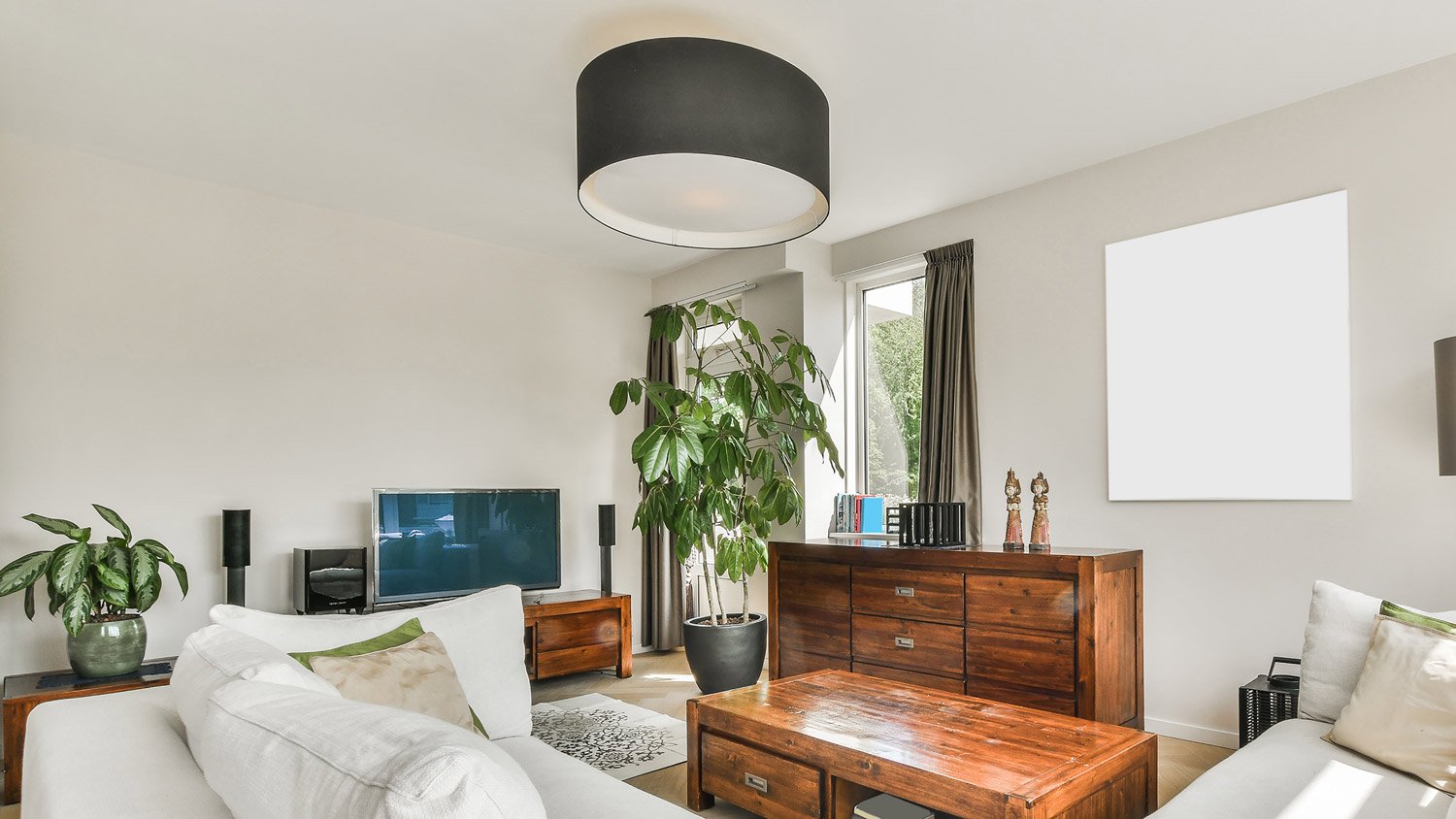
If you’re looking for more shaded types of light fixtures, drum chandeliers are a great choice. Unlike other types of chandeliers where the light bulbs are clearly visible and exposed, drum chandeliers offer a softer, more even glow. They are shaped like shallow drums with a singular, circular shade wrapping around the lights housed on the inside. Drum chandeliers come in a wide range of diameters, so they can fit rooms of almost any size. They tend to be shorter in height, taking up less vertical space in rooms with lower ceilings.
| Pros | Cons |
|---|---|
| Soft, even glow | Must clean shade |
| Range of sizes | Bulbs hard to access |
| Less height needed | Can feel dated |
Best For: Anywhere in the home with lower ceilings
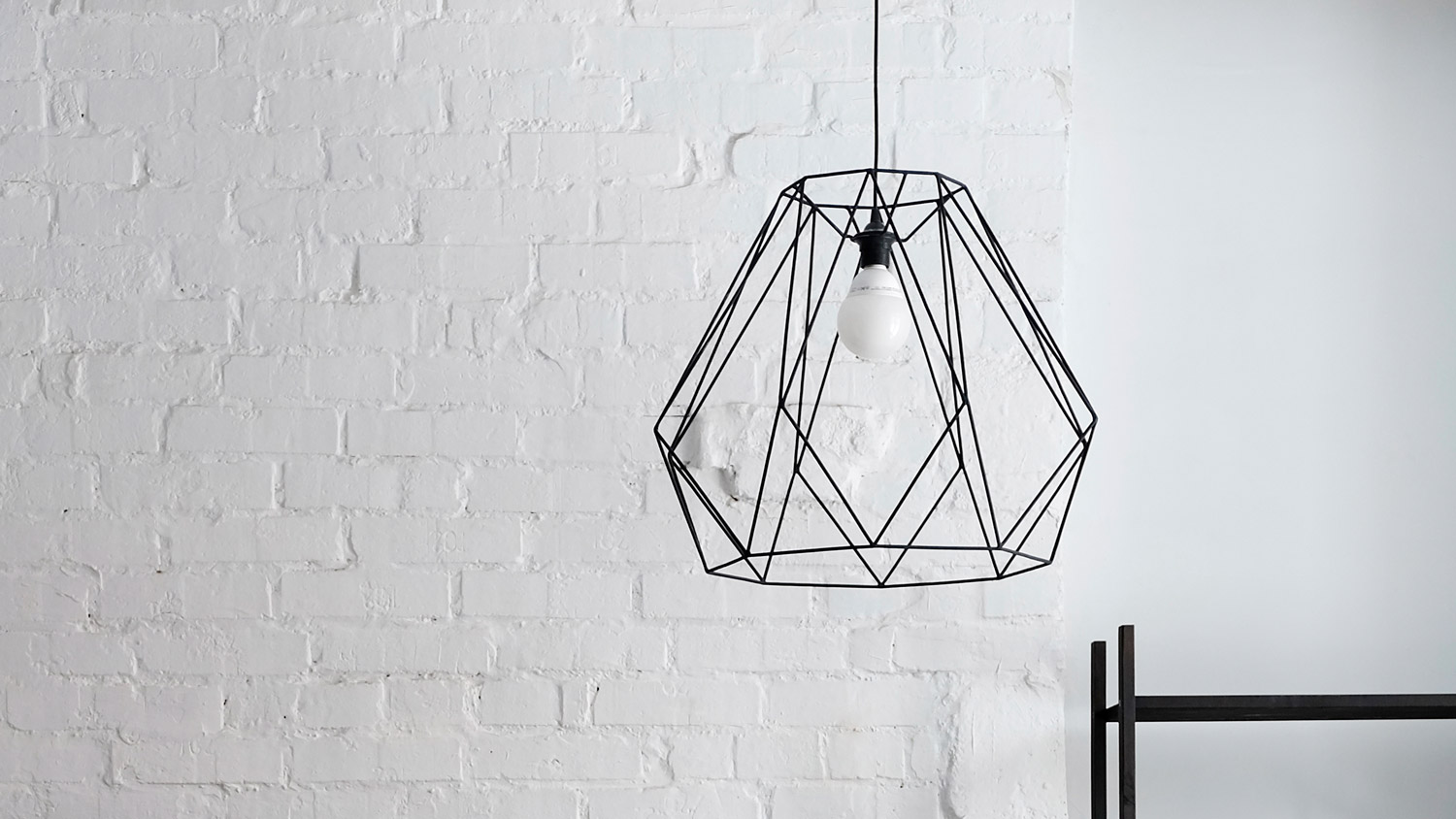
Another more modern approach to home lighting is the range of caged chandeliers that have hit the market in recent years. The lights in the center are surrounded by a cage of geometric shapes, like intertwined cubes with open faces. The faces are often completely open, though they may be behind protective glass, too. The three-dimensional effect is a real stunner. There are also spherical caged chandeliers that give off a bit of a celestial vibe. Check with light fixture installation companies near you to see what is available in your area.
Best For: Entryways, kitchens, and dining rooms in modern homes
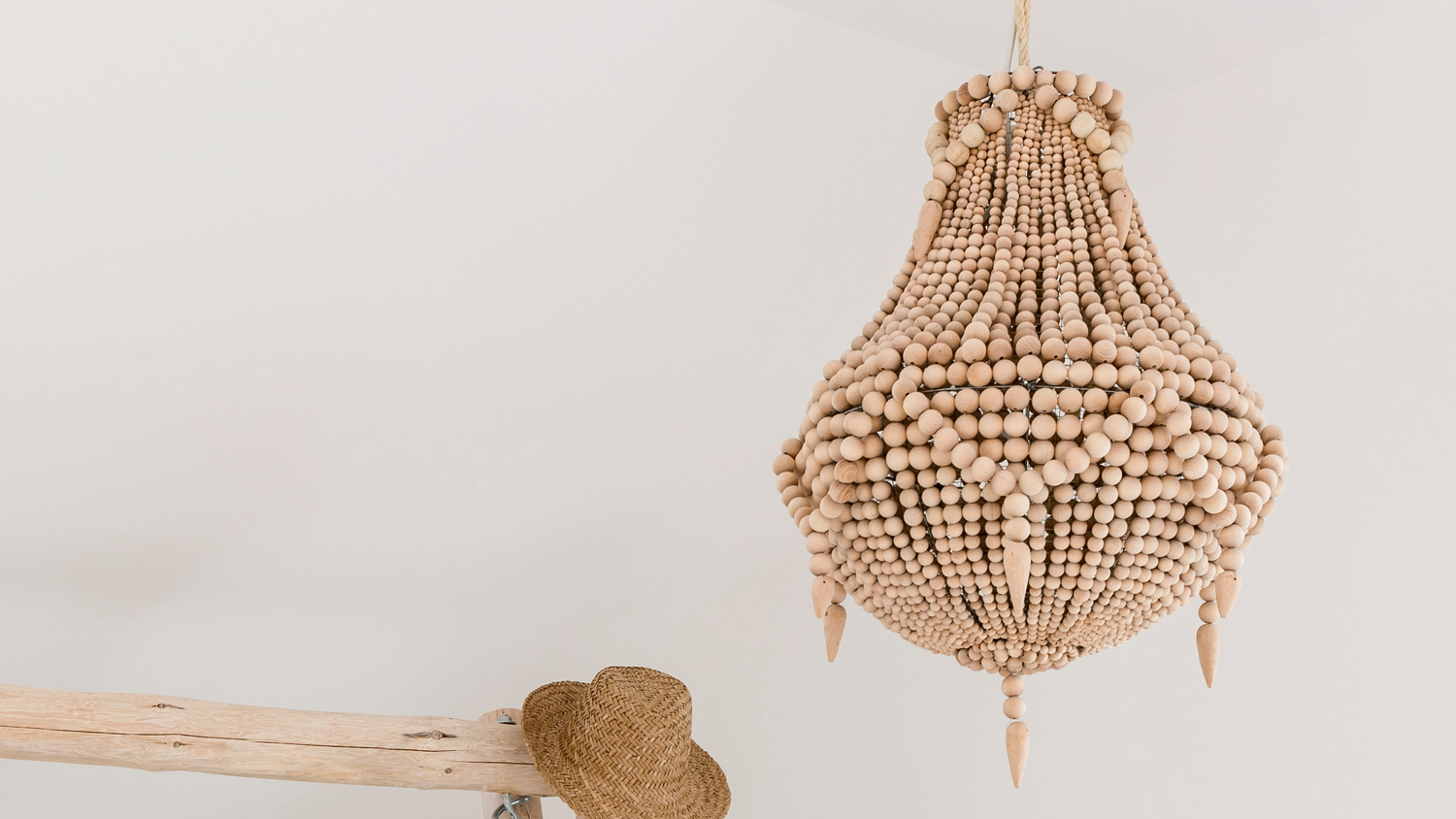
If you’re a fan of pearl necklaces and chunky jewelry, beaded chandeliers may suit your personal sense of style, too. Instead of metal chains or strings of crystal making up the main form of the light fixture, beaded chandeliers have strings of beads. They may be all the same color, or they may be different colors. The beads may be wooden, glass, or made with other materials like shells.
| Pros | Cons |
|---|---|
| Bold visual style | Beads block light |
| Rustic, exotic charm | Somewhat dated |
| Can fit most rooms | Hard to clean |
Best For: Bedrooms and spaces with a more exotic flair
Along with deciding on what types of modern chandeliers might work best in your space, you must also pick the right size. There is no one-size-fits-all solution here, as it also depends on personal taste and preference. Choosing what size chandelier for a dining room is also different from choosing the right size for a living room or bedroom. The chandelier style or design can affect the size, as some styles may “feel” larger or smaller than Best For: Bedrooms and spaces with a more exotic flairothers.
Here is a general rule of thumb to keep in mind:
Measure the length and width of a room in feet.
Add those two numbers together.
Change the unit to inches to get the chandelier diameter.
For example, a room that is 10 feet wide and 12 feet long could call for a chandelier with a 22-inch diameter. The chandelier should typically be between half and three-quarters the width (or diameter) of a table if it will be hanging above it. A table that is eight feet long and four feet wide calls for a chandelier that’s between 24 and 36 inches in diameter. In any case, the chandelier should be small enough that diners don’t bump their heads on it as they sit down.
Hang a chandelier so its lowest point is about 30 inches above the tabletop. You want to make sure guests have enough room to reach their food comfortably! If the chandelier isn’t above a table, like in the living room, it should be about one-quarter the height of the ceiling or less. A room with standard 8-foot ceilings calls for a 20 to 24-inch chandelier. Vertical chandeliers around spiral staircases are an obvious exception to this rule.
From average costs to expert advice, get all the answers you need to get your job done.

Discover how much under-cabinet lighting costs. Discover installation prices, key cost factors, and expert tips to save on your kitchen or workspace lighting project.

Discover the professional Christmas light installation cost, including average prices, cost factors, and tips to save on your holiday lighting project.

Get transparent light fixture repair cost info. Learn what impacts price, compare repair vs. replacement, and find ways to save.

Discover how to hang string lights from any spot in your yard for an instant glow up that feels warm, cozy, and downright fun.

Lighting aisle feeling overwhelming? This article explains the different types of light bulbs, watts, lumens, shapes, sizes, colors, and more.

Life happens, and bulbs break! Learn how to remove a broken light bulb the safe, easy way with five proven methods in this guide.